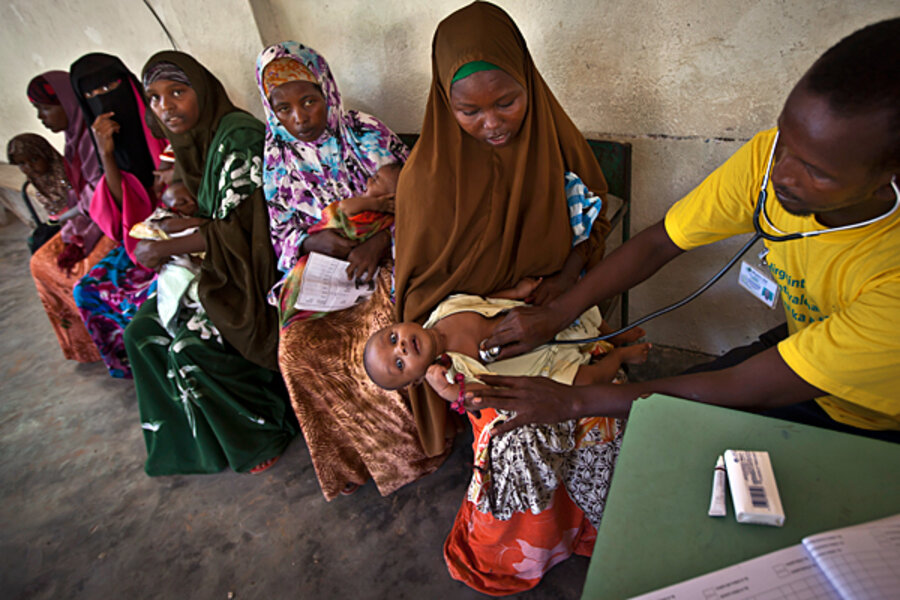To save more newborns, focus on the poor, report says
Loading...
Over the last two decades, the number of children dying before their fifth birthday has decreased dramatically around the globe – falling from 12 million annually in 1990 to 7 million today. But one group remains particularly at risk: newborns born to poor families.
In the world’s poorest countries – as well as some of its richest – income is an increasingly large factor in how risky a baby’s first days of life are, according to a report released today by Save the Children, an international nongovernmental organization.
“There’s a real need to create [public health] strategies focused on equity in access to care,” says Sara Stulac, deputy chief medical officer for the NGO Partners in Health, and a pediatrician. “We actually know a number of low cost ways to decrease infant mortality – the challege is implementation.”
In an analysis of 50 developing countries, Save the Children found that babies born to parents in the poorest fifth of the population died 40 percent more often than those in the richest fifth.
And in some countries, the gap is even more dramatic.
In Bolivia, for instance, babies born to poor mothers die three times as often as those born to rich mothers. In India, which has the highest number of newborn deaths annually in the world (876,000), a poor baby is twice as likely to die in infancy as a rich one.
“No longer is the question really one of rich countries and poor countries,” says Save the Children CEO Carolyn Miles. “Now it’s about reaching the poor kids wherever they are."
In many ways, the yawning gap in healthcare access for mothers and babies is a classic story of how globalization has cleaved the world along new lines. As medical technology has spread rapidly around the world, the well-off in even the poorest of countries now visit hospitals, seek advice from trained medical professionals, and have access to medicine and nutrition that dramatically reduce health risks for their children.
At the same time, however, millions of women in rural, remote, and impoverished areas of those same countries continue to give birth at home and never come into contact with the medical system. Their babies die frequently from easily treatable infections and other medical conditions, notably complications from premature birth, the report states.
One intervention that has already worked in many places in the world, Dr. Stulac notes, is training community health workers who can be present at a birth and perform basic lifesaving procedures – like resuscitating a baby who stops breathing – in the crucial first minutes of life.
“Community health workers are a very cost effective way of improving health in remote areas,” she says. “Many people in the world simply need a way to be connected to the medical system – and community health workers are that.”
But the problems around infant mortality are not limited to the developing world. Among developed countries, the United States – which has the highest rate of income inequality in the Western world – also has the largest number of children who die on the day of their birth.
More than 11,000 babies die the same day they are born the US each year, 50 percent more than in all the other industrialized nations combined.
Besides looking at infant mortality, Save the Children’s “State of the World’s Mothers” report also ranks the world’s best – and worst – places to be a mother, using a metric based on education, income, women’s political representation, and the chances a mother and her baby will survive. This year,Finland ranked first, and the Democratic Republic of Congo last. The United States was 30th, below all of Western Europe, as well as Canada, Israel, Australia, Singapore, and several Eastern European nations.








